Natural Bridge State Park
- June 12, 2024
- 0 comment
Discover the awe-inspiring natural bridges and diverse ecosystems at Natural Bridge State Park. Perfect for hiking, history, and nature lovers. Immerse yourself in the spectacular beauty and historical depth of Natural Bridge State Park, a place where nature’s artistry is on full display. From the awe-inspiring natural bridges that have stood the test of time to the rich tapestry of ecosystems thriving within, this park offers a sanctuary for those seeking adventure, enlightenment, and a deep connection with the natural world.

Whether you’re tracing the steps of history, exploring diverse trails, or simply basking in the serene beauty of the landscapes, Natural Bridge State Park invites you to discover its many wonders. A haven for hikers, history buffs, and nature enthusiasts alike, the park promises unforgettable experiences amid its majestic natural formations and vibrant wildlife. Here, every path and every vista tells a story of geological marvels and the enduring allure of the great outdoors.
Characterizing Features of Natural Bridge State Park
- Natural Bridges: The park is famed for its breathtaking natural arches, including the towering 215-foot tall limestone gorge carved by Cedar Creek in Virginia, and Kentucky’s sandstone arch spanning 78 feet wide and standing 65 feet high. These geological formations, created by millions of years of erosion, stand as majestic gateways to the park’s diverse landscapes.
- Historic Significance: Once owned by Thomas Jefferson, the park’s Virginia section is listed on the National Register of Historic Places, indicating its importance in American history not only for its natural beauty but also for its cultural heritage.
- Diverse Landscapes: The park’s terrain is a striking showcase of karst landscapes, featuring beautiful forests, rolling meadows, and vistas of surrounding mountains and the James River valley. Its unique geological features, including the only natural white marble arch in North America, illustrate a variety of natural processes and formations.
History of Natural Bridge State Park
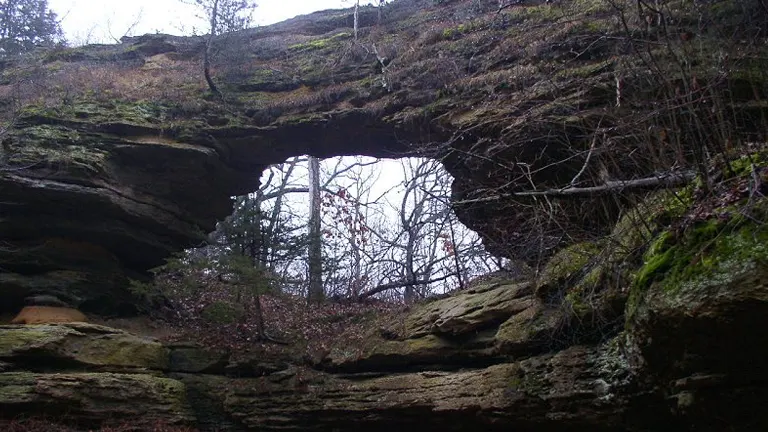
Natural Bridge State Park’s history is as rich and varied as its landscapes. Initially owned by Thomas Jefferson, who purchased the land in Virginia in 1774, the park’s natural bridge has been a subject of fascination and reverence for centuries. The Kentucky section’s natural bridge, within the Daniel Boone National Forest, was founded as a private tourist attraction in 1895, eventually becoming part of the state park system in 1926. These areas have been preserved and protected for their historical significance and natural beauty, offering insights into both the natural world and the history of the United States.
Unique Ecosystem of Natural Bridge State Park

The park is home to a unique ecosystem, highlighted by its designation as a nature preserve in Kentucky. This dedication helps protect the ecological communities and rare species habitats found within the park. The different regions of the park support a variety of flora and fauna, adapted to the specific conditions of limestone gorges, sandstone cliffs, and marble arches, creating a biodiverse environment that underscores the importance of conservation efforts.
Location of Natural Bridge State Park
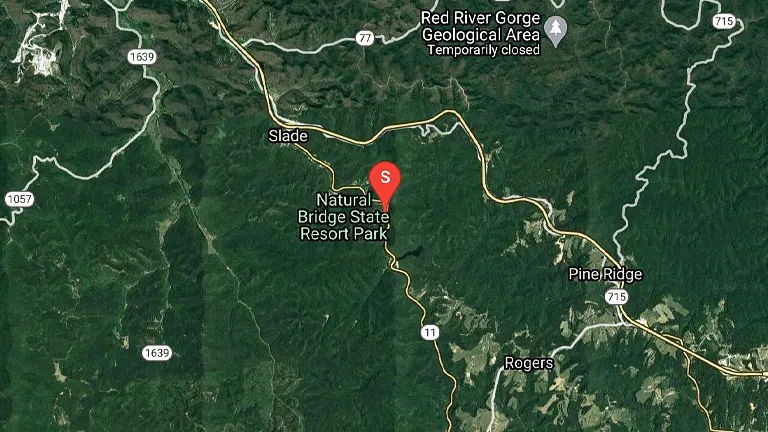
Natural Bridge State Park spans several locations, each with its own unique geological and historical significance. In Virginia, it’s located within the Shenandoah Valley, showcasing the limestone natural bridge. Kentucky’s portion lies in Powell and Wolfe Counties, adjacent to the Red River Gorge Geologic Area and within the Daniel Boone National Forest. The park’s New England section boasts the only natural white marble arch in North America, highlighting the diverse geological features across its locations.
The Importance of Conservation and Recreation in Natural Bridge State Park
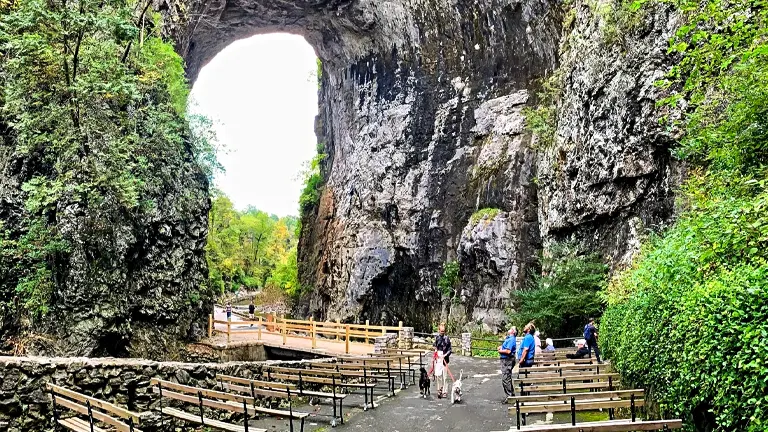
Conservation and recreation go hand in hand at Natural Bridge State Park, where efforts to preserve the park’s natural and historical resources provide a backdrop for a variety of recreational activities. The park’s dedication to conservation, including its status as a nature preserve in Kentucky, ensures the protection of its unique ecosystems and biodiversity. This commitment allows visitors to enjoy and learn from the natural world through responsible recreation, emphasizing the park’s role in environmental education and stewardship.
Diverse Vegetation and Plant Species in Natural Bridge State Park
- Eastern Hemlock (Tsuga canadensis): This evergreen conifer is a staple in the park’s forested areas, providing dense shade that cools the forest floor and supports a unique understory ecosystem. The Eastern Hemlock is crucial for maintaining the health and balance of the park’s forest habitats.
- Mountain Laurel (Kalmia latifolia): Known for its beautiful pink and white flowers that bloom in late spring and early summer, the Mountain Laurel adds a splash of color to the park’s landscape. This evergreen shrub thrives in the park’s rocky and acidic soils, often found along hiking trails and ridgelines.
- American Ginseng (Panax quinquefolius): Highly valued for its medicinal properties, American Ginseng is a herbaceous perennial that grows in the cooler, shaded areas of the park. Due to overharvesting and habitat loss, it’s considered a species of conservation concern, highlighting the importance of preserving its natural habitat in the park.
- Rhododendron (Rhododendron): The park’s rhododendrons, including the Catawba Rhododendron (Rhododendron catawbiense) and Rosebay Rhododendron (Rhododendron maximum), are iconic features of the Appalachian landscape. These large shrubs or small trees bloom with large, vibrant flowers, contributing to the park’s stunning visual appeal.
- Yellow Birch (Betula alleghaniensis): Recognizable by its shiny, yellowish-bark, the Yellow Birch is a key component of the park’s forests. It prefers moist, cool environments and contributes to the park’s diverse canopy. The tree is also important for wildlife, providing habitat and food for various bird and mammal species.
- Tulip Poplar (Liriodendron tulipifera): As one of the tallest and most majestic trees in the eastern United States, the Tulip Poplar stands out in the park’s forests. Its distinctive tulip-shaped flowers and large, bright green leaves make it easy to identify. The tree plays a crucial role in the ecosystem, supporting a variety of wildlife.
- Ferns (Various species): The park’s moist and shaded gorges are ideal habitats for a variety of ferns, such as the Christmas Fern (Polystichum acrostichoides) and the Maidenhair Fern (Adiantum pedatum). Ferns add to the park’s lush, green understory and are indicative of a healthy, moist ecosystem.
- Wildflowers (Various species): Throughout spring and summer, the park’s meadows and forests are adorned with wildflowers, including the Virginia Bluebell (Mertensia virginica), Trillium (Trillium), and Wild Geranium (Geranium maculatum). These flowers not only add beauty to the landscape but also provide vital nectar sources for pollinators.

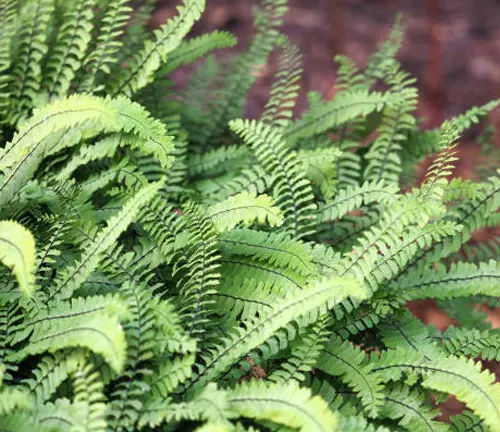
Fauna in Natural Bridge State Park
- White-tailed Deer (Odocoileus virginianus): These deer are prevalent throughout Natural Bridge State Park, playing a crucial role in the ecosystem by controlling the growth of vegetation. However, their browsing habits can sometimes conflict with forest regeneration efforts.
- Black Bear (Ursus americanus): Black Bears are a testament to the park’s diverse habitats, ranging from forests to swamps. They are omnivores with diets that can lead them to interact with human areas, prompting efforts to secure food sources and minimize conflicts.
- Eastern Gray Squirrel (Sciurus carolinensis): Ubiquitous across the park, these squirrels are vital for seed dispersal, aiding in the regeneration of hardwood forests. Their presence indicates a healthy, balanced ecosystem.
- Peregrine Falcon (Falco peregrinus): Having rebounded from the brink of extinction, Peregrine Falcons in the park showcase successful conservation efforts. They are apex predators, controlling populations of smaller birds and rodents with their incredible speed.
- Eastern Chipmunk (Tamias striatus): These small, striped rodents contribute significantly to the park’s ecological health by dispersing seeds and aerating the soil through their burrowing activities.
- Bobcat (Lynx rufus): The elusive bobcat inhabits the park’s more secluded areas, serving as a key predator in the food chain. Their presence underscores the park’s rich biodiversity and the importance of preserving natural habitats.

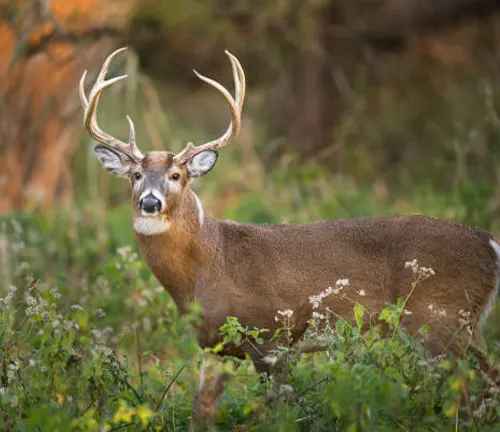
Attractions in Natural Bridge State Park
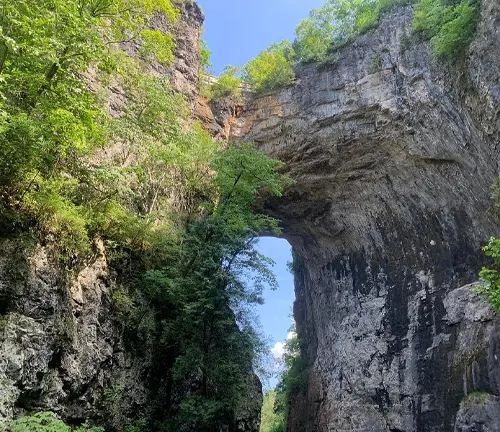
The Natural Bridge: The centerpiece of the park is the Natural Bridge itself, a magnificent limestone arch that spans 90 feet in height. Formed over millions of years by the forces of nature, this geological wonder is not only a breathtaking sight but also steeped in history, having been revered by Native American cultures and later owned by Thomas Jefferson. The bridge is a testament to the power and beauty of natural architecture, drawing visitors from around the world.
Lace Falls: Tucked within the park is Lace Falls, a serene and picturesque waterfall that cascades down 30 feet into Cedar Creek. The trail leading to Lace Falls is equally enchanting, offering a peaceful hike through dense forests and alongside the babbling creek. This spot provides a perfect opportunity for photography, reflection, and experiencing the soothing sounds of nature.

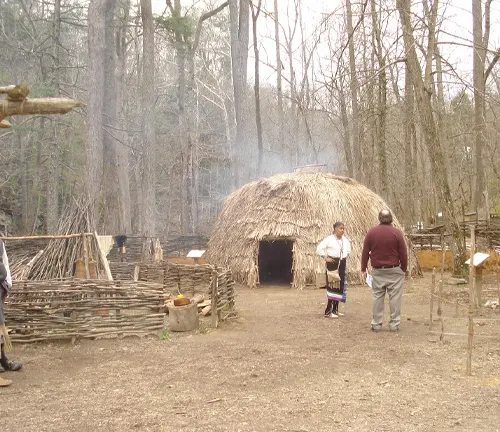
Monacan Indian Village: The Monacan Indian Village is a living history exhibit within the park that offers a glimpse into the life of the Monacan tribe, who once inhabited the area. This attraction is educational and immersive, allowing visitors to observe and participate in traditional crafts, understand the tribe’s cultural practices, and learn about their significant connection to the land. It’s a valuable experience for those interested in the rich tapestry of American history and indigenous cultures.
Caverns at Natural Bridge: The Caverns at Natural Bridge provide an underground adventure, showcasing an array of stalactites, stalagmites, and other fascinating rock formations. Tours of the caverns reveal the hidden world beneath the park’s surface, explaining the geological processes that shaped these features over millennia. The cool, otherworldly atmosphere of the caverns offers a stark contrast to the landscapes above ground and is a must-see for geology enthusiasts.
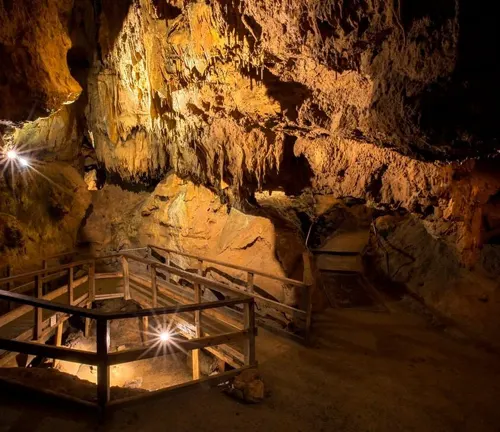

Skyline Trail: For those seeking breathtaking views, the Skyline Trail offers a rewarding hike that culminates in panoramic vistas of the surrounding mountains and valleys. The trail is moderately challenging, making it suitable for most visitors, and it’s especially popular during the autumn months when the foliage transforms into a vibrant display of colors. It’s a reminder of the vast, untouched wilderness that still exists, inviting exploration and adventure.
Butterfly Garden: The Butterfly Garden at Natural Bridge State Park is a delightful attraction for all ages, featuring a variety of native plants and flowers designed to attract butterflies. This area not only serves as a beautiful and tranquil spot for relaxation but also educates visitors on the importance of pollinators and biodiversity in our ecosystems. The garden is a testament to the park’s commitment to conservation and environmental education.

Recreational Activities in Natural Bridge State Park
- Hiking: The park boasts an extensive network of trails ranging from easy walks to more challenging hikes, catering to all skill levels. Trails like the Cedar Creek Trail that leads to the Natural Bridge and Lace Falls allow visitors to explore the park’s natural wonders up close. Hiking these trails offers not only exercise but also the opportunity to witness the diverse flora and fauna, geological formations, and breathtaking vistas that define the park.
- Bird Watching: With its rich biodiversity, Natural Bridge State Park is a haven for bird enthusiasts. The park’s varied habitats support a wide range of bird species, making it an ideal spot for bird watching. Whether you’re a seasoned birder or a casual observer, the park’s feathered residents, from the majestic Peregrine Falcon to the melodious songbirds, provide ample opportunity for observation and photography.
- Fishing: Cedar Creek, flowing through the park, offers serene spots for fishing. Anglers can enjoy the tranquility of the park while fishing for native species. It’s a perfect activity for those seeking a peaceful retreat into nature, with the added excitement of making a catch. Remember to check local regulations and obtain the necessary permits before fishing.
- Picnicking: The park provides designated picnic areas where visitors can enjoy a meal surrounded by nature’s beauty. These areas offer a perfect break spot for families and groups to gather and enjoy the park’s scenic views and fresh air. Picnicking in the park is a great way to relax and spend quality time with loved ones after exploring the trails or visiting the attractions.
- Photography: With its stunning landscapes, historic landmarks, and rich wildlife, Natural Bridge State Park is a photographer’s paradise. From capturing the grandeur of the Natural Bridge and the gentle cascade of Lace Falls to the intricate details of a butterfly in the garden, the park offers endless subjects for photography enthusiasts. It’s an activity that allows visitors to take a piece of the park’s beauty home with them.
- Educational Programs: The park often hosts educational programs and guided tours that enrich the visitor experience with insights into the park’s natural history, geology, and ecology. These programs are fantastic for families and anyone interested in learning more about the environment. Participating in these activities can deepen your understanding of the park’s ecosystems and conservation efforts.
- Stargazing: Away from city lights, Natural Bridge State Park offers dark skies that are perfect for stargazing. On clear nights, visitors can gaze up at the stars and constellations, marveling at the vastness of the universe. It’s an awe-inspiring activity that connects people with the wonders of the cosmos.
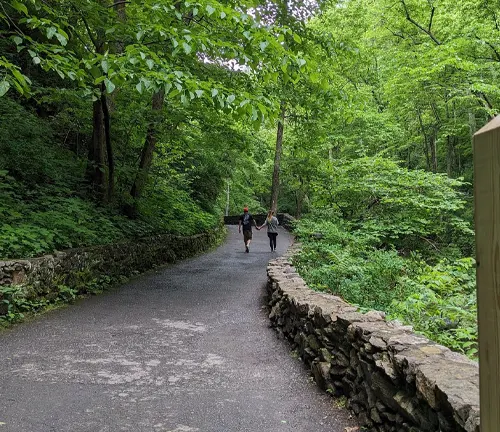
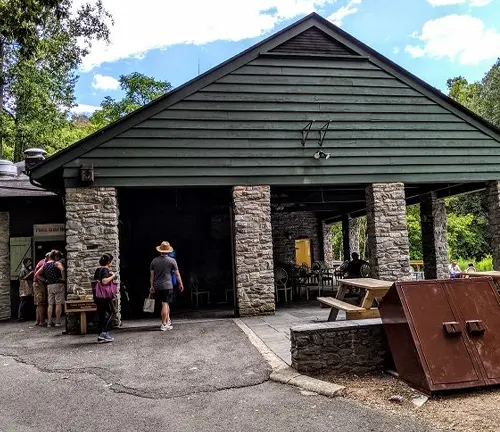
Different Facilities and Amenities in Natural Bridge State Park
- Visitor Center: The Visitor Center serves as the gateway to the park, offering a wealth of information about its natural, cultural, and historical features. Staffed by knowledgeable park rangers, the center provides maps, brochures, and exhibits that help visitors plan their day and learn about the park’s significance. It’s also the place to inquire about guided tours, educational programs, and any current events or activities happening in the park.
- Gift Shop: Located within the Visitor Center, the Gift Shop offers a variety of souvenirs, ranging from postcards and t-shirts to locally crafted goods and educational books. Purchasing items from the gift shop is a great way to remember your visit to the park and support its maintenance and conservation efforts.
- Restrooms: Clean and accessible restrooms are available throughout the park, ensuring comfort for visitors as they explore. These facilities are strategically located near major attractions, picnic areas, and trailheads, making it easy for guests to refresh and continue their adventures in the park.
- Picnic Areas: The park features several picnic areas equipped with tables and grills, providing the perfect setting for a family outing or a relaxing meal in nature. These areas are nestled in scenic locations, offering views of the surrounding landscape while you dine. Some picnic areas are available on a first-come, first-served basis, while others can be reserved in advance for larger groups.
- Hiking Trails: A network of well-maintained trails crisscrosses the park, catering to hikers of all skill levels. From easy strolls to more strenuous hikes, these trails lead visitors through the park’s diverse ecosystems, to its famous natural formations, and offer stunning vistas. Trail maps are available at the Visitor Center, helping hikers navigate the park’s natural beauty safely.
- Parking: Ample parking is available at the park, with designated lots near the Visitor Center, major attractions, and trailheads. This ensures easy access for visitors to start their exploration of the park without hassle. Some areas may require a parking fee, so it’s advisable to check the latest information at the Visitor Center upon arrival.
- Educational Exhibits: Throughout the park, especially in the Visitor Center, educational exhibits provide insights into the park’s geology, flora, fauna, and history. These exhibits are designed to engage visitors of all ages, making learning about the natural world both fun and informative. They enhance the visitor experience by offering deeper context to the natural wonders seen throughout the park.
- Accommodations: While the park itself does not offer lodging, there are nearby accommodations ranging from campgrounds to hotels, catering to different preferences and budgets. Information and recommendations for nearby accommodations can be obtained at the Visitor Center, ensuring visitors can find a comfortable place to stay after a day of exploration.
Tips and Advice for Visiting Natural Bridge State Park
- Check Weather and Park Advisories: Weather conditions can greatly impact your experience at Natural Bridge State Park. It’s advisable to check the forecast in advance to prepare for potential rain, heat, or cold. Additionally, the park may post advisories about trail conditions, wildlife activity, or other relevant information. Staying informed helps ensure your visit is safe and enjoyable.
- Pack Appropriately for the Day: Essential items for a day at the park include water, snacks, sunscreen, insect repellent, and a basic first aid kit. Hydration is key, especially on hot days or when engaging in physical activities like hiking. Sunscreen and insect repellent protect against sunburn and bites, while snacks keep your energy up. A first aid kit is a precaution for minor scrapes or issues that may arise.
- Wear Comfortable and Suitable Clothing: The right clothing can make a difference in your comfort and enjoyment. Wear breathable, moisture-wicking fabrics to stay comfortable during physical activity, and dress in layers to adjust to changing temperatures. Proper footwear is crucial, especially on uneven terrain, to prevent slips and falls.
- Respect Wildlife and Preserve Natural Beauty: The park is home to a diverse array of wildlife and plants. It’s important to observe animals from a safe distance and avoid feeding them, as human food can harm their health and alter natural behaviors. Additionally, leave plants, rocks, and other natural objects as you find them to preserve the park’s pristine condition.
- Stay on Designated Trails and Areas: Trails and boardwalks are designed to protect both visitors and the environment. Straying from these paths can damage sensitive habitats and put you at risk. Following marked trails ensures your safety and helps preserve the park’s natural landscapes for future visitors.
- Plan Your Visit During Less Busy Times: Visiting on weekdays or outside of peak seasons can offer a more tranquil experience, allowing you to enjoy the park’s beauty without crowds. Early mornings and late afternoons are also less crowded times that provide softer light for photography.
- Take Advantage of Ranger Programs and Guided Tours: Park rangers and guides offer valuable insights into the park’s ecology, geology, and history. Participating in these programs can enhance your understanding of the area, making your visit more meaningful and educational.
- Practice Leave No Trace Principles: Adhering to Leave No Trace principles, such as packing out all trash, minimizing impact on the environment, and respecting wildlife, is essential for the conservation of natural spaces. These practices ensure that the park remains a beautiful and healthy environment for all visitors and wildlife.
- Capture Memories, But Focus on the Experience: While photographs are a wonderful way to remember your visit, it’s important to also put the camera away at times and immerse yourself in the moment. The sights, sounds, and smells of the natural environment provide a rich experience that goes beyond the visual.
- Prepare for Limited Cell Service: Cell service can be spotty or nonexistent in some areas of the park. Prepare by downloading maps and any necessary information ahead of time. This lack of connectivity can enhance your experience, allowing you to fully disconnect and engage with the natural world around you.
Recommendation
For a comprehensive experience of Natural Bridge State Park, allocate a full day to explore its natural wonders, historical sites, and participate in recreational activities. The park’s diverse offerings ensure that there’s something for everyone, making it a must-visit destination for nature lovers, history enthusiasts, and adventure seekers alike.
Conclusion
Natural Bridge State Park is a testament to the enduring beauty and historical depth of the American landscape. With its awe-inspiring natural formations, rich biodiversity, and a plethora of activities, the park offers an escape into the wonders of the natural world. It stands as a reminder of the importance of conservation and the joy of outdoor recreation, inviting visitors to explore, learn, and connect with nature.
FAQs
- Can I access the Natural Bridge at any time of day?
The Natural Bridge can be accessed during park hours, which vary seasonally. It’s best to check the current hours on the park’s official website or contact the Visitor Center to plan your visit accordingly. - Is there a fee to enter Natural Bridge State Park?
Yes, there is an entrance fee to Natural Bridge State Park, which helps with the maintenance and preservation of the park. Fees vary for adults, children, and groups, with detailed information available on the park’s website or at the Visitor Center. - Are there guided tours available, and how can I join one?
Guided tours are offered, providing in-depth insights into the park’s natural and historical features. You can join a tour by signing up at the Visitor Center upon arrival. Some tours may require an additional fee, so it’s recommended to inquire in advance. - What should I do if I encounter wildlife in the park?
If you encounter wildlife, maintain a safe distance and do not attempt to feed or approach the animals. This ensures both your safety and the well-being of the wildlife. Report any concerning wildlife behavior to park staff. - Can I camp overnight within the park?
Overnight camping is not permitted within Natural Bridge State Park itself, but there are nearby campgrounds and lodging options for those wishing to stay close. - Are there any restrictions on photography within the park?
Photography for personal use is encouraged, but commercial photography may require a permit. It’s advisable to check with the park administration for specific guidelines and restrictions. - What facilities are available for visitors with disabilities?
The park strives to be accessible to all visitors, with designated parking areas, accessible restrooms, and pathways. For specific accommodations or concerns, it’s best to contact the park directly before your visit. - How can I support Natural Bridge State Park?
Visitors can support the park by adhering to park rules, participating in volunteer opportunities, or making donations to the park’s conservation efforts. Purchasing items from the gift shop also helps support the park’s educational and preservation activities.
Natural Bridge State Park is a stunning showcase of nature’s artistry and history, offering breathtaking views and enriching experiences. It’s a perfect escape for those seeking adventure and tranquility in Virginia’s beautiful outdoors.


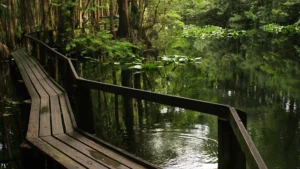
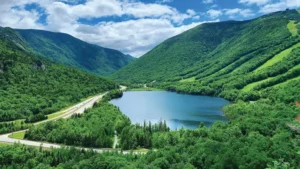

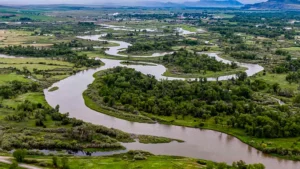

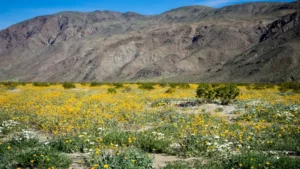
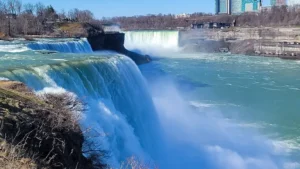

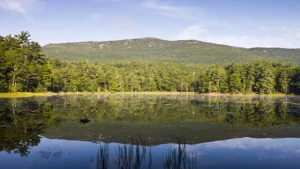
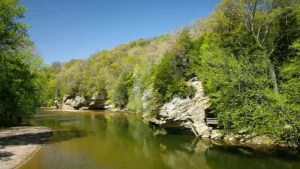
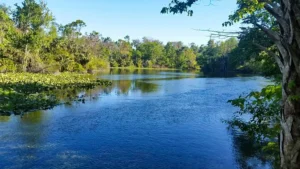
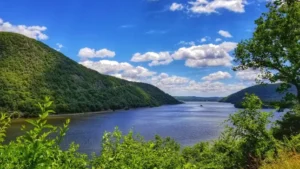
Leave your comment